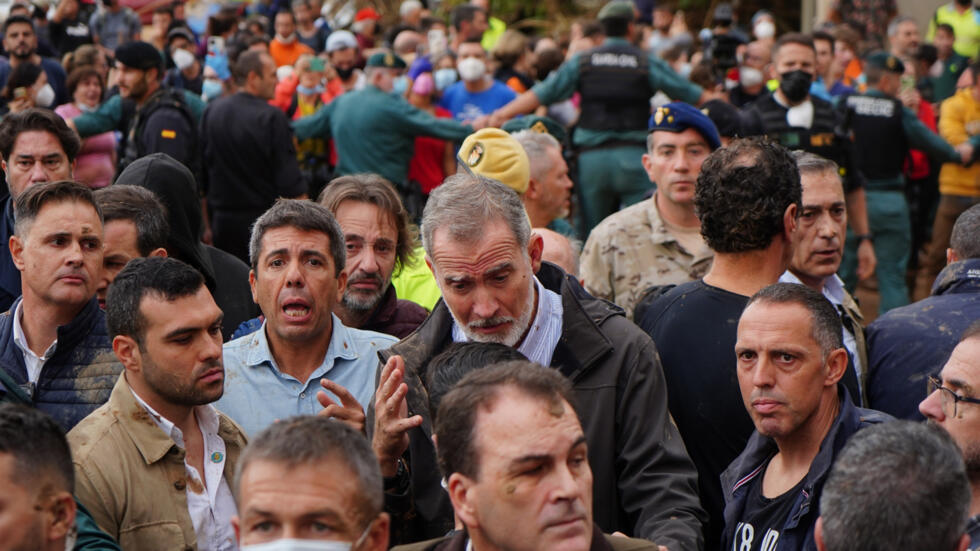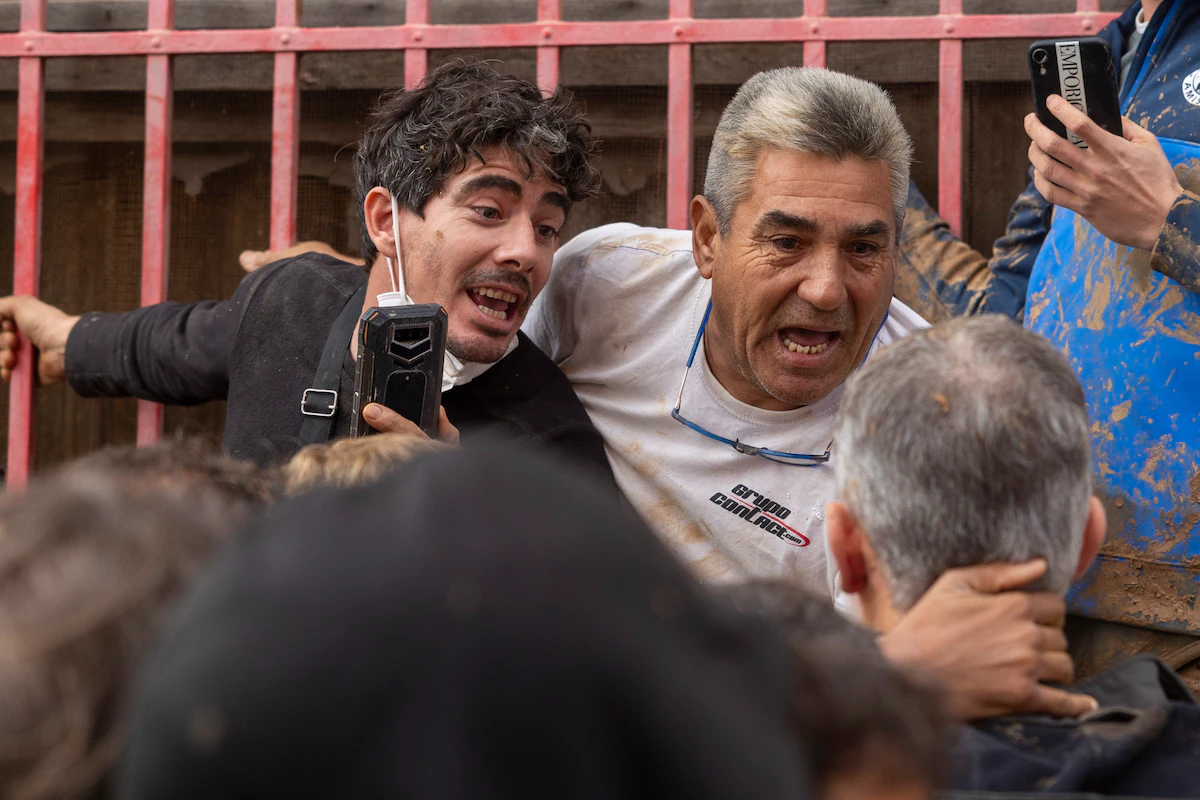In the Valencia region of Spain, a recent visit by King Felipe and Queen Letizia to flood-stricken areas met with a strong backlash from locals, who expressed anger over the perceived inadequate government response to the disaster.
With over 200 fatalities from the floods, residents in hard-hit areas, like Paiporta, were vocal in their frustration, chanting “murderer” at the king and expressing outrage at Prime Minister Pedro Sanchez and regional governor Carlos Mazon. Despite the hostile reception, the king and queen attempted to engage with residents, while security personnel struggled to maintain order as protestors threw eggs and surged towards the officials.
The king, remaining calm amidst the chaos, even lowered his umbrella to listen to one distressed resident, while Queen Letizia was visibly affected, covering her face in distress. The Royal Family later shared images on social media showing the king and queen comforting distraught locals, which included scenes of Felipe hugging grieving residents.
This level of hostility directed at the monarchy is uncommon in Spain, as King Felipe typically enjoys a relatively positive public image. However, the flood response appeared to have shifted some of the anger toward regional and federal authorities.

King Felipe and Queen Letizia Face Hostile Crowd in Valencia Amid Criticism of Spain’s Flood Response
Prime Minister Sanchez and Governor Mazon, who both faced significant backlash, departed the area earlier than the king, citing security protocol. The political tension was palpable, with Mazon acknowledging residents’ anger and commending the king’s decision to stay despite the tense atmosphere.
Sanchez later deployed an additional 5,000 troops to assist in the recovery efforts, addressing criticisms over the slow response, which he admitted was insufficient given the scale of the disaster. However, political complexities between Spain’s federal and regional governments slowed down the allocation of emergency resources, as regional approval was only granted days after the flooding began.
The tragedy has underscored existing issues in Spain’s disaster management systems, where delayed communication and resource coordination worsened the crisis. Text alerts warning residents of the flooding arrived late, and the federal government’s ability to respond was hindered by bureaucratic requirements for regional authorization.
Amidst more heavy rain warnings, local authorities urged residents in certain areas to take shelter, and volunteers were mobilized to aid in cleanup efforts. Videos on social media showed police urging residents to avoid dangerous areas, reflecting the heightened state of emergency.
Despite thousands of volunteers stepping forward, logistical challenges further exacerbated frustrations. Supplies ran low, transport for volunteers was disorganized, and many waited hours to assist only to be turned away.
Some volunteers expressed disappointment in the response, feeling that the government could have done more. The crisis has highlighted the need for improved disaster preparedness and coordination between regional and federal authorities, as well as a stronger, more immediate response to natural disasters.











































